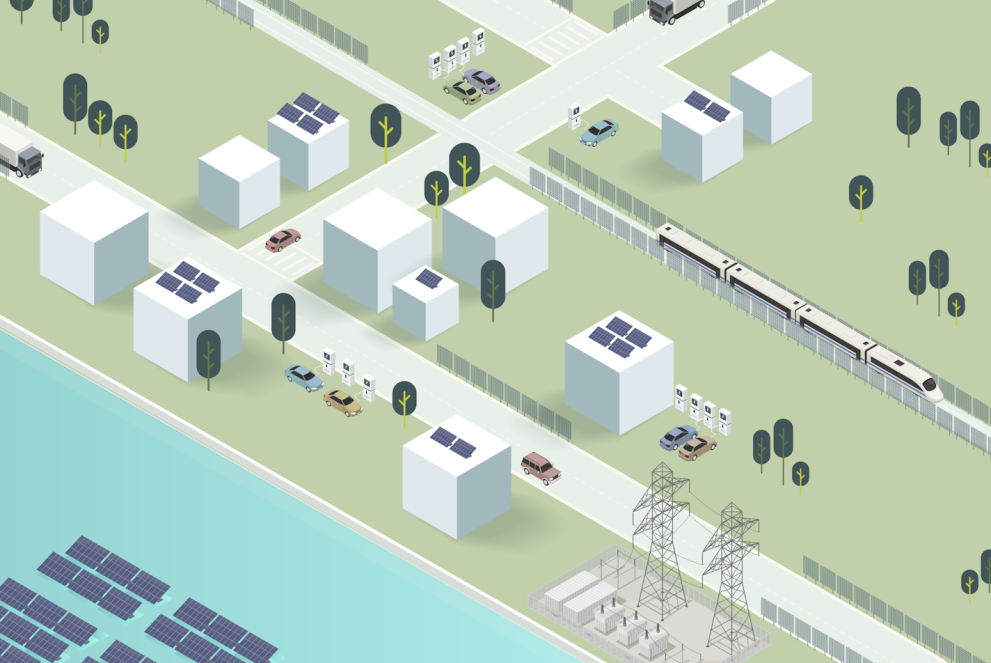
Renewable energy technologies, such as PV, play an essential role in meeting the growing demand for electricity while accelerating the transition to climate neutrality. In fact, the EU Solar Energy Strategy has set ambitious targets for PV installation, aiming for 385 GWDC (320 GWAC) by 2025 and 720 GWDC (600 GWAC) by 2030. However, land use competition, permitting requirements and grid connections place constraints on traditional ground-mounted systems.
At the same time, large-scale uptake of rooftop PV and innovative applications such as floating PV (FPV) – coupled with hydropower – and PV along roads and railways offer opportunities for renewable deployment that has a very limited impact on the environment and biodiversity and that does not increase competition between land uses.
Such systems also contribute to local energy production and decentralisation, while reducing transmission losses and improving energy system resilience.
How much energy can such deployment really generate?
The study, Communication on the potential of applied PV in the European Union: Rooftops, reservoirs, roads (R3), takes a geospatial approach to assess the technical capacity potential i.e. an estimate of the total achievable generation capacity under given system performance, topographic, environmental and land use constraints, of these three PV applications, collectively referred to as R3 (rooftops, reservoirs, roads). It then uses the JRC’s in-house Photovoltaic Geographical Information System (PVGIS) tool to estimate the energy yield.
The results point to a capacity potential of 1,120 GWp (933 GWAC), with a corresponding production of 1,208 TWh/yr, representing 48% of the EU’s 2022 electricity consumption. This capacity alone would easily surpass the 2030 goals set in the EU Solar Strategy.
Rooftop PV application contributes the most, with 560 GWDC (466 GWAC) of technical installed capacity and 680 TWh/yr of potential electricity generation. The contribution of vertical bifacial PV installations along roads and railways follows, with a potential contribution of 403 GWDC (336 GWAC), delivering 391 TWh/yr. As for FPV, its deployment on 337 selected hydropower reservoirs (with electricity or water supply as their primary use) could deliver 157 GWp (131 GWAC) capacity and 137 TWh/yr electricity.
What is the potential for individual countries?
Looking at the impact at country level, the results indicate that several geographically smaller countries, such as Cyprus, Estonia, Latvia and Portugal, could use the R3 options to produce more electricity than their current consumption.
Eleven EU countries, including Bulgaria, Croatia, Greece, Finland, Hungary, Slovakia and Sweden, have the technical potential to deliver between 50% and 100% of their 2022 electricity consumption through R3 applications.
France and Germany, despite having the largest final electricity consumption, have the technical potential to substitute more than 30% of their current consumption. Italy, with the third-largest total final consumption, could potentially replace up to 47% of its current electricity production with R3 PV deployment.
Moreover, the study identifies the potential for electricity carbon intensity reduction using electricity from R3 installations in the current power generation mix. France and Germany could reduce their current (2022) carbon intensity by 17% and 21%, respectively.
Countries with high carbon intensities, such as Poland and Italy, could decrease their carbon intensity by up to 29%. Smaller countries, like Estonia, Greece, Latvia and Lithuania where R3 technical potential installed capacity is lower, can still achieve a CO2 emission reduction of over 35%.
Related links
Report: Communication on the potential of applied PV in the European Union: Rooftops, reservoirs, roads (R3)
Photovoltaic Geographical Information System (PVGIS)
Overview of the Potential and Challenges for Agri-Photovoltaics in the European Union
Benefits of pairing floating solar photovoltaics with hydropower reservoirs in Europe
Details
- Publication date
- 14 February 2024
- Author
- Joint Research Centre
- JRC portfolios




